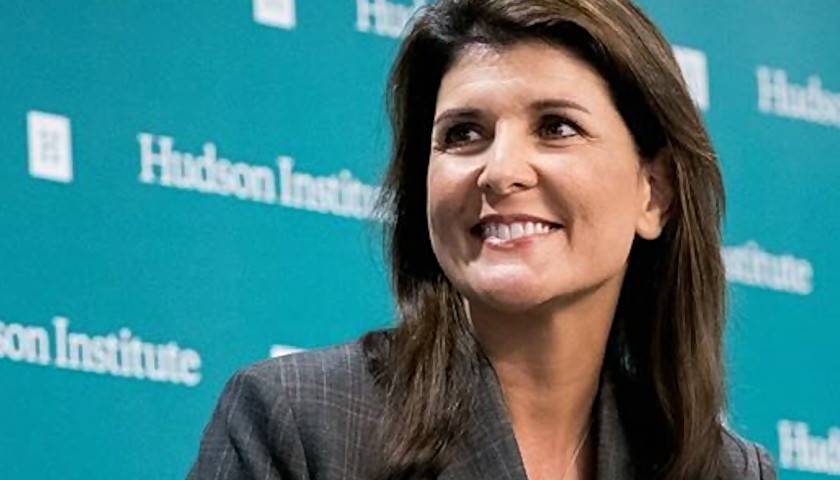by Jonathan Lesser
Last March, President Joe Biden announced a goal of building 30,000 megawatts (MW) of offshore wind generation by 2030. Doing so will “strengthen the domestic supply chain and create good-paying union jobs,” according to the White House. It’s all part of the president’s executive order to “build a new energy economy that will create millions of new jobs.”
Except the executive order won’t accomplish this, not least because it rests on an assumption that endless green energy subsidies will produce boundless economic growth.
As I discuss in a new Manhattan Institute report, building 30,000 MW of offshore wind by 2030 is not going to happen. The goal is infeasible. And, even if it were achievable, offshore wind’s dismal economics make it a goal to be avoided. If common sense ruled the day — hey, we can all dream — then offshore wind would be torpedoed and allowed to sink into the abyss.
 But green energy policies have nothing to do with common sense. They are all about the politically well-connected draining money from U.S. taxpayers and indulging the fantasies of climate catastrophists who believe the end is nigh.
But green energy policies have nothing to do with common sense. They are all about the politically well-connected draining money from U.S. taxpayers and indulging the fantasies of climate catastrophists who believe the end is nigh.
There is only one offshore wind facility operating in the U.S. today — the 5-turbine, 30 MW Block Island Wind Farm, located off the coast of Rhode Island. The project took two years to build and cost about $400 million, or over $13 million per MW. By comparison, a new gas-fired combined-cycle generator has a capital cost of around $1 million per MW and can produce electricity when needed, not just when the wind blows.
Block Island is the poster child for the types of technological issues that are almost certain to affect future U.S. offshore wind development. Since it began producing electricity in December 2016, it has been plagued by operational issues, In 2017, it’s two undersea cables became uncovered because of tidal action. After almost five years, the longer cable to the mainland has still not been reburied. In June 2011, four of the five turbines were shut down for “routine maintenance” because of potential stress fractures in their towers.
While the executive order mentions improved supply chains, they are one of the things that will sink the 30,000 MW goal. As my report details, the rush to develop offshore wind in the U.S. will run headlong into the reality of scarce and increasingly costly resources. Raw materials, including rare earths and steel, are in short supply. The same is true for the magnets wind turbines require: there is only one manufacturer of these magnets in the U.S.
Moreover, improved supply chains will not change the decade or more needed to go from planning to construction, nor address the growing environmental concerns over massive offshore wind development. Vineyard Wind, for example, which will be built off the Martha’s Vineyard, is facing numerous lawsuits over its potential adverse impacts on endangered whales and commercial fishing interests. Those lawsuits are likely to delay the project for several years, if not longer. And more lawsuits are forthcoming.
Then there are the specialized ships needed to erect the 850-foot tall turbines. By the end of next year, there will be just six of those ships in the entire world. And only one ship — which is still under construction — will be able to deliver materials from U.S. ports, thanks to the requirements of the century-old Jones Act, which requires goods shipped between U.S. ports to be transported on vessels that are built, owned and operated by U.S. citizens or permanent residents. Oh, and the specialized workers needed to operate these ships are oil workers, primarily those who work on offshore oil platforms. Good luck getting them.
Those are some of the hurdles to construct the turbines. But as those late-night commercials tell us, “Wait, there’s more.” Laying the cable needed to deliver electricity from the turbines to the mainland also requires specialized ships. And the manufacturing lead times for the cable itself is now several years. Moreover, siting cable requires years of studies to avoid — a la Block Island — improper burial. Furthermore, offshore wind cannot simply be “plugged in” to the high-voltage power grid. Doing so requires careful studies to determine whether the system can handle the additional power and, if not, what upgrades are required.
Of course, offshore wind developers don’t want to pay for any of those upgrades. Nor do they want to pay for all of the back-up generation — or, in another green fantasy — battery storage to compensate for offshore wind’s fickle generation. The battery storage needed would require hundreds of Tesla gigafactories producing batteries.
But what about all of those high-paying union jobs? Proponents like to tout economic studies that show how subsidies for new manufacturing facilities, upgrades to ports, and subsidies for the turbines will create millions of new jobs. Except all these ignore one salient fact: the money comes from higher electricity rates and higher taxes, both of which reduce economic growth and kill far more jobs than the subsidies create. Robbing Peter to pay Paul is not an effective strategy for economic growth, no matter how much Paul may benefit.
Ultimately, the offshore wind fantasy will only end after we waste billions of dollars and turn electricity from a necessity of daily life to a luxury good, available only intermittently.
That won’t be fantasy; it will be an all-too-real nightmare.
– – –
Jonathan Lesser is the president of Continental Economics and an adjunct fellow with the Manhattan Institute. His new report, “The Biden Administration’s Offshore Wind Fantasy,” was just published.




